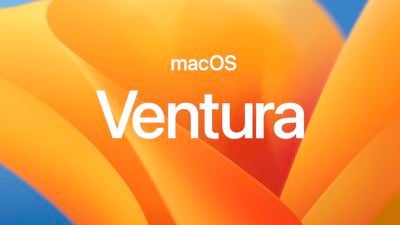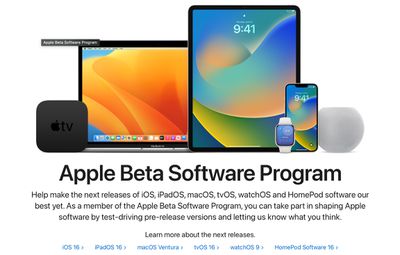Apple has made a macOS 13 Ventura beta available for its public beta testing group, letting public beta testers try out the software before it launches this fall.

The macOS Ventura Public Beta is available to anyone with a compatible Mac and it does not require a developer account. This guide walks you through some simple steps on installing the beta software.
Before downloading the update, it's worth noting that Apple does not recommend installing the macOS Ventura Public Beta on your main Mac, so if you have a secondary machine, use that. This is beta software, and there are often bugs and issues that pop up that can prevent software from working properly or cause other problems.
It's also worth noting that there are some major UI changes to System Preferences, so you may want to avoid committing to the beta usage experience until you've tried it out.
macOS Ventura Compatibility
macOS Ventura is compatible with many of the Macs that were able to run macOS Monterey. The Macs below can run the software.
- iMac - Late 2015 and later
- iMac Pro - 2017 and later
- MacBook Air - Early 2015 and later
- MacBook Pro - Early 2015 and later
- Mac Pro - Late 2013 and later
- Mac mini - Late 2014 and later
- MacBook - Early 2016 and later
Make a Time Machine Backup
Before you upgrade to the Ventura beta, you should make sure to make a backup using Apple's Time Machine backup feature with an external drive.
If you want to revert back to your previous setup after testing macOS Ventura or if you run into a bug and need to backtrack, you'll need to reinstall macOS Monterey (or your prior OS) and a backup can be helpful for reverting.
Enroll in the Beta Software Program
Installing macOS Ventura requires enrolling your Mac in Apple's free Apple Beta Software Program. Follow these steps to do so.

- Visit the Apple Beta Software Program website in a browser on your Mac.
- Click on the blue Sign up button or, if you're already a member, click Sign in in the top-right of the webpage.
- Enter your Apple ID and password and then a two-factor authentication code if verification is required.
- Agree to the Apple Beta Software Program terms and conditions.
- Once signed in and at the Guide for Public Betas page, scroll up to the top and click on "Enroll Your Devices" then click on "macOS."

Downloading and Installing the macOS Ventura Beta
After you've enrolled in the public beta testing program, you're able to download macOS 13.
- After selecting the macOS section on the beta website, scroll down to "Enroll your Mac" and click on "Download the macOS Public Beta Access Utility option."
- If you get a popup asking if you want to allow downloads on "beta.apple.com" click Allow.
- Unless you've changed where files download, the beta installer (macOSPublicBetaAccessUtility.dmg) will show up in your downloads folder. Locate it and double-click it to open it up.
- Double click on the .pkg file inside to run the installer.
- You may see a warning advising you to back up your Mac with Time Machine. Either stop here and back up, or, if you've already done so, Click OK and then click Continue.
- Click Continue again and then click Agree to accept Apple's software license agreement, then click Install. Enter your admin password if prompted.
- Once the installer has completed the download, the System Preferences Software Update panel will open automatically and display the macOS 13 Beta download. Click Upgrade Now to download the public beta software when prompted. It will take some time to download the file, and when the download is complete, your Mac should restart.
- After a restart, the macOS 13 installer should launch automatically. If it does not, it can be found in the applications folder.
- From here, click Continue and walk through the steps as instructed, agreeing to the terms and conditions and making sure you've performed a backup.
- Select the drive that you want to install the public beta on. You can choose your main drive or a partition that you've created.
- Click Install, enter your administrator password, and click OK, then click Restart or wait for your Mac to reboot automatically.
After your Mac restarts, the macOS 13 installation process will begin. It takes some time for the update to install, but when the installation is finished and your Mac boots up again, it will be running the Ventura public beta.
macOS Ventura introduces a long list of new features such as Stage Manager and Continuity Camera. We have a full list of everything new in macOS Ventura in our dedicated roundup. The final release is expected in the fall.






















